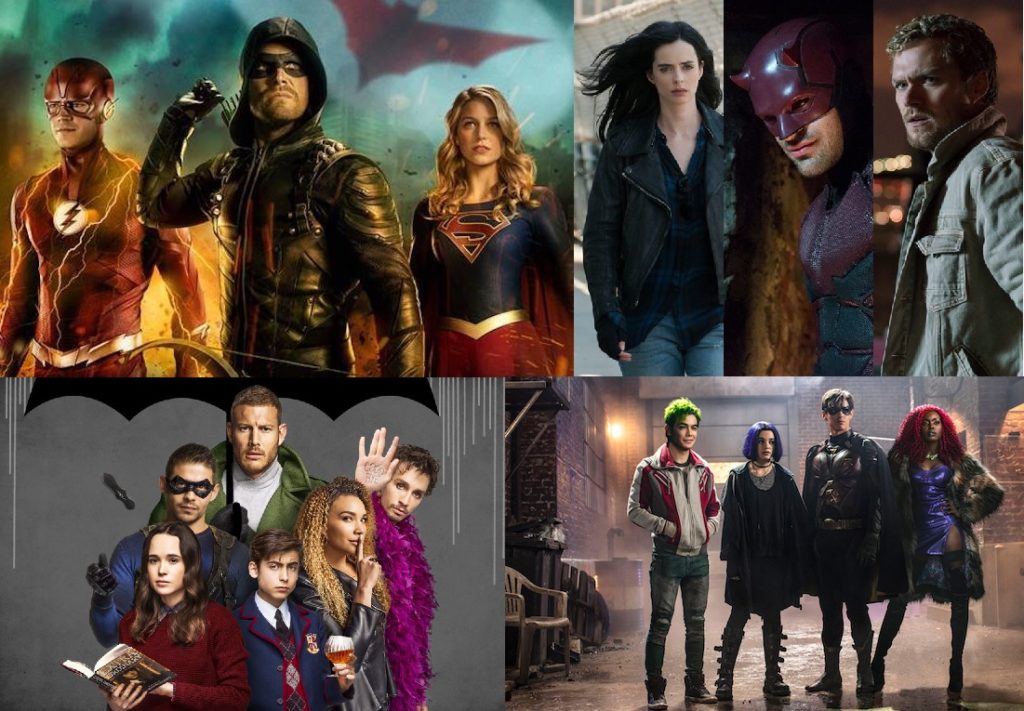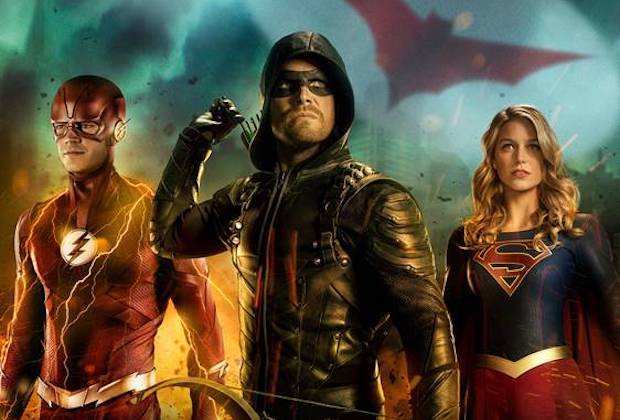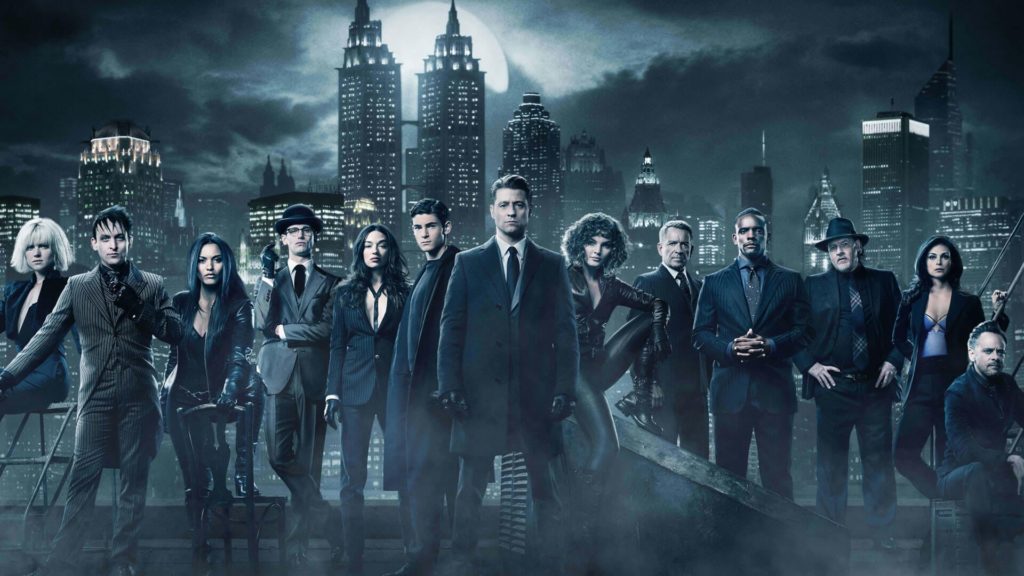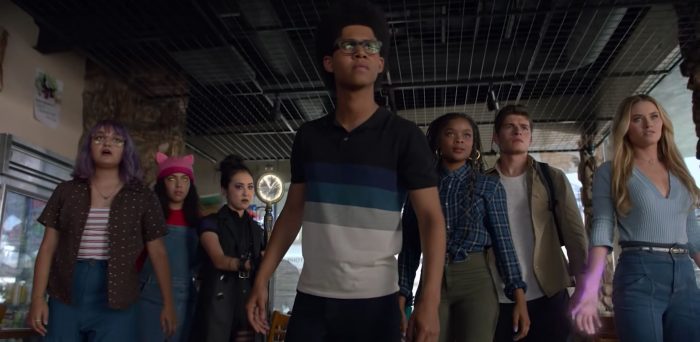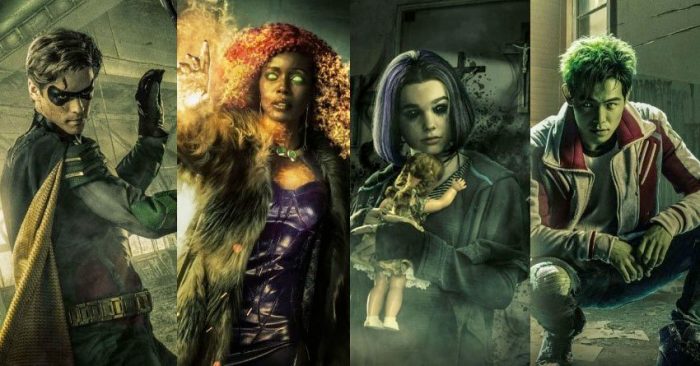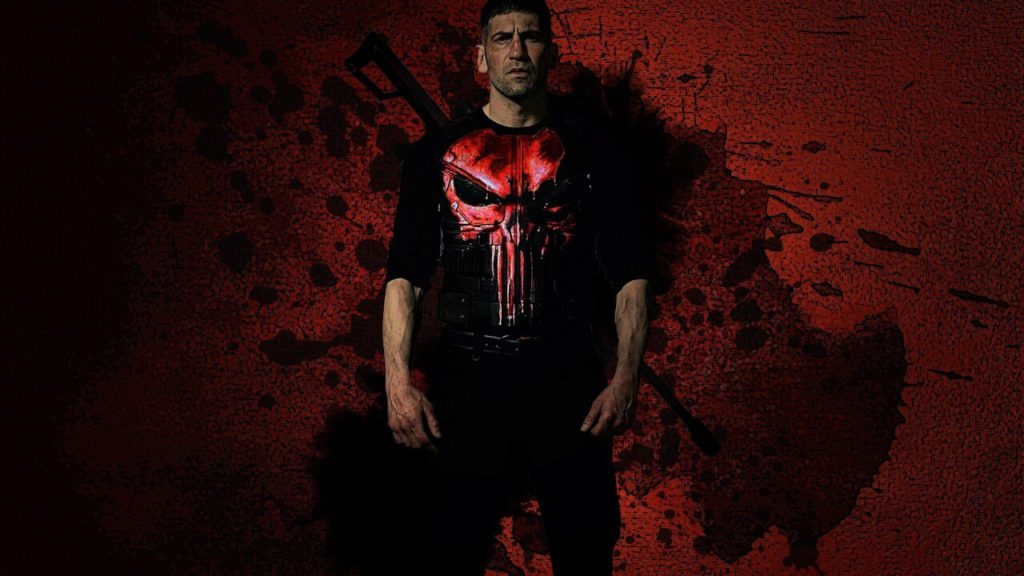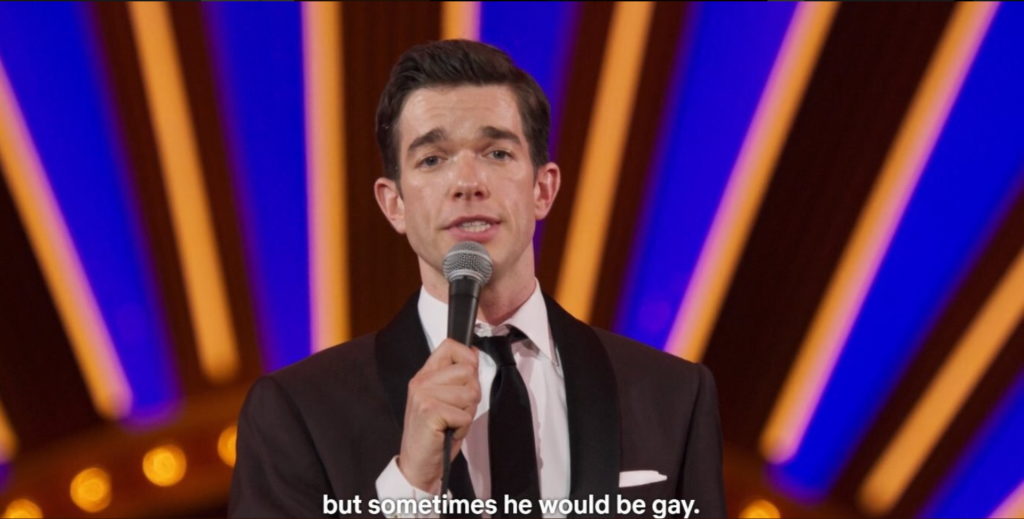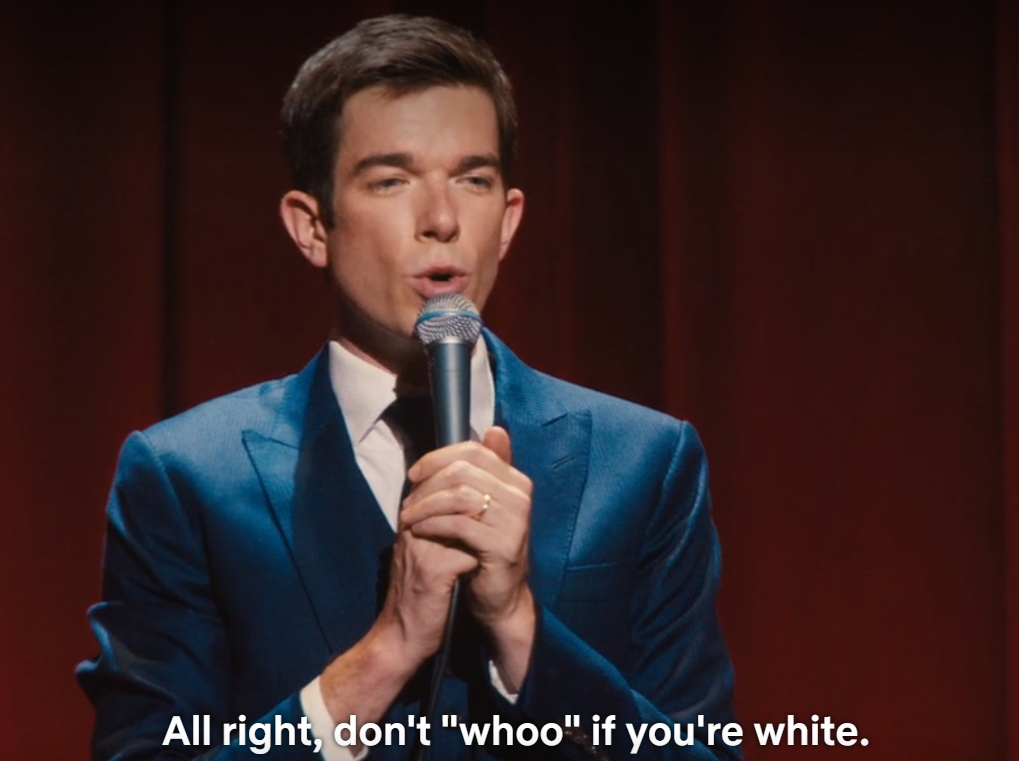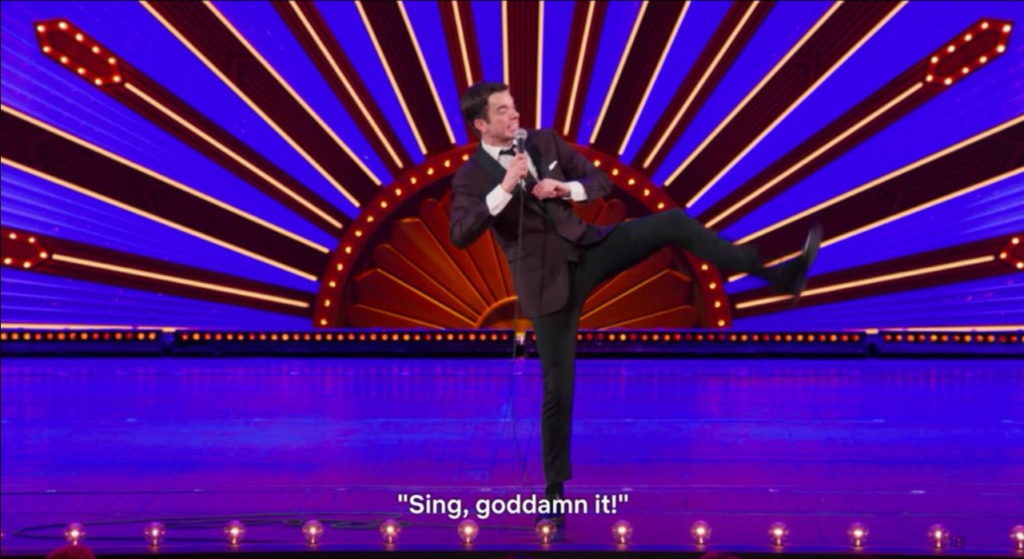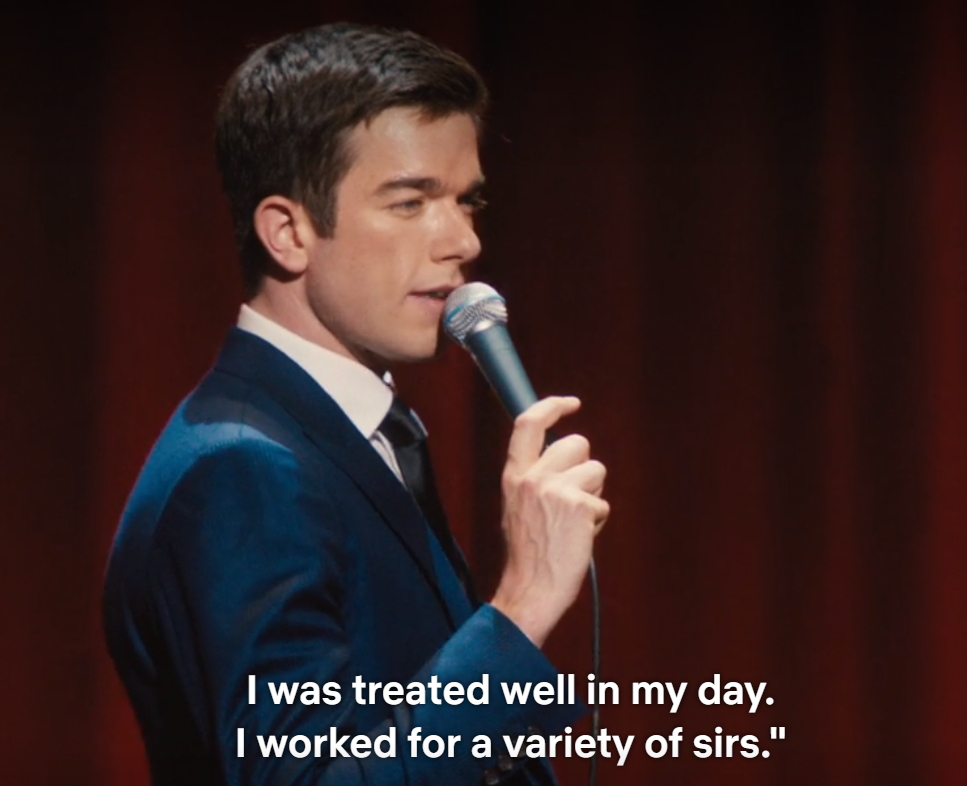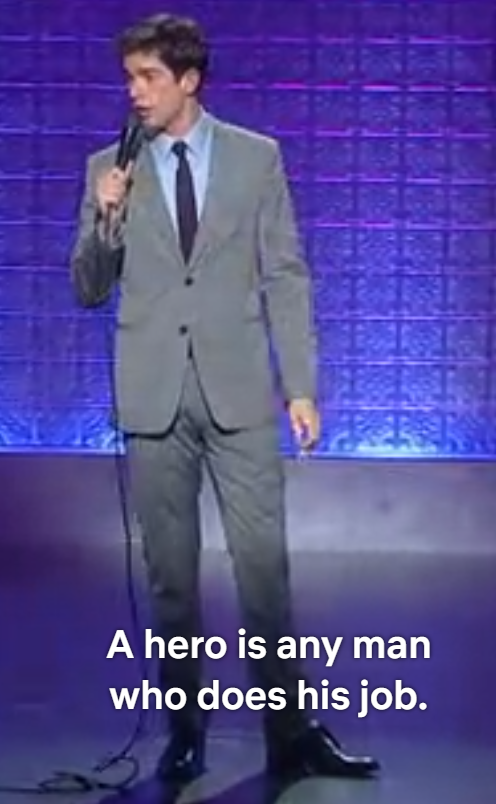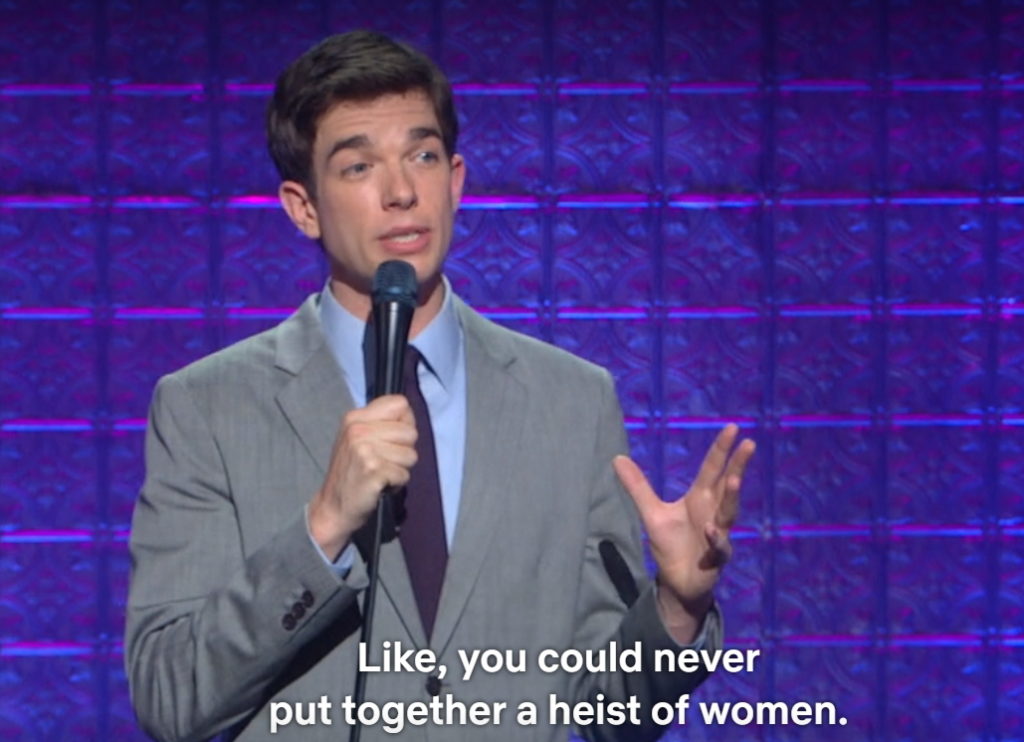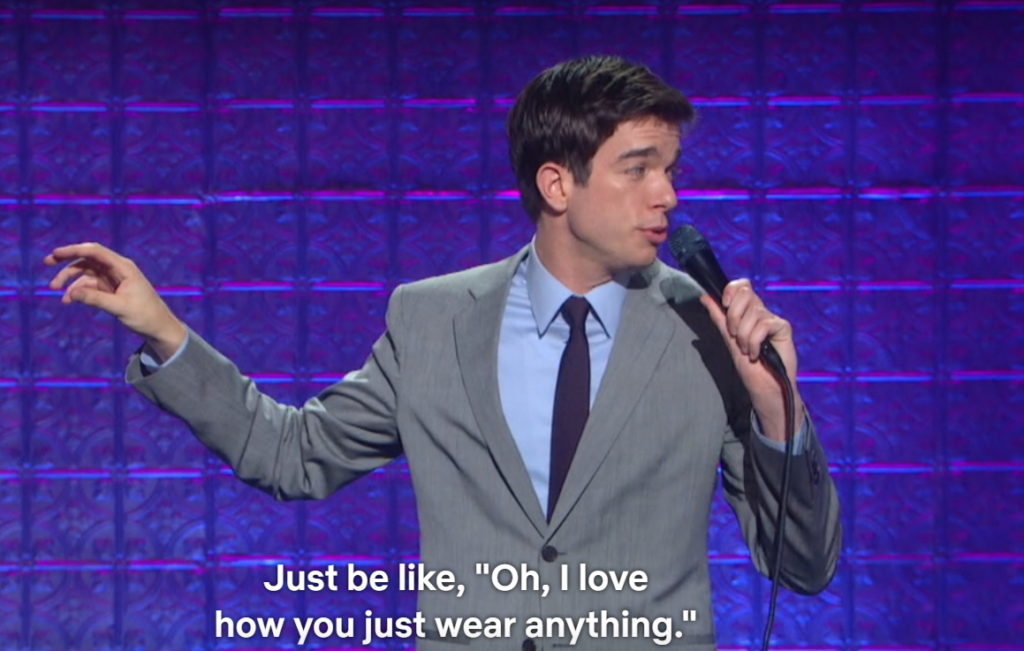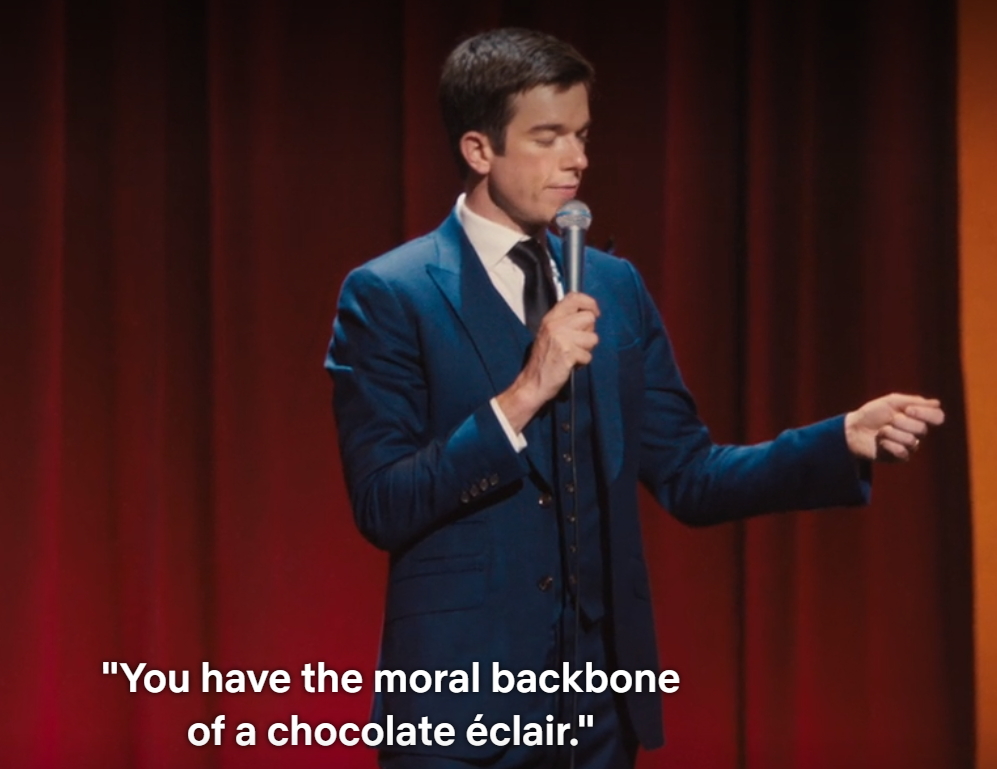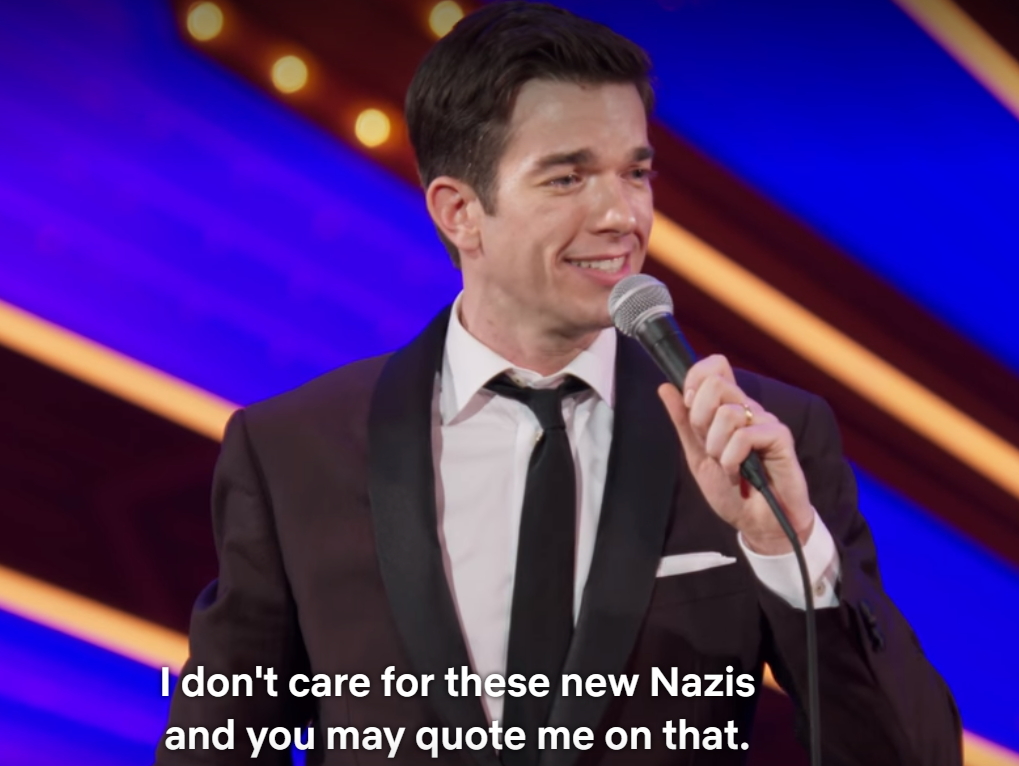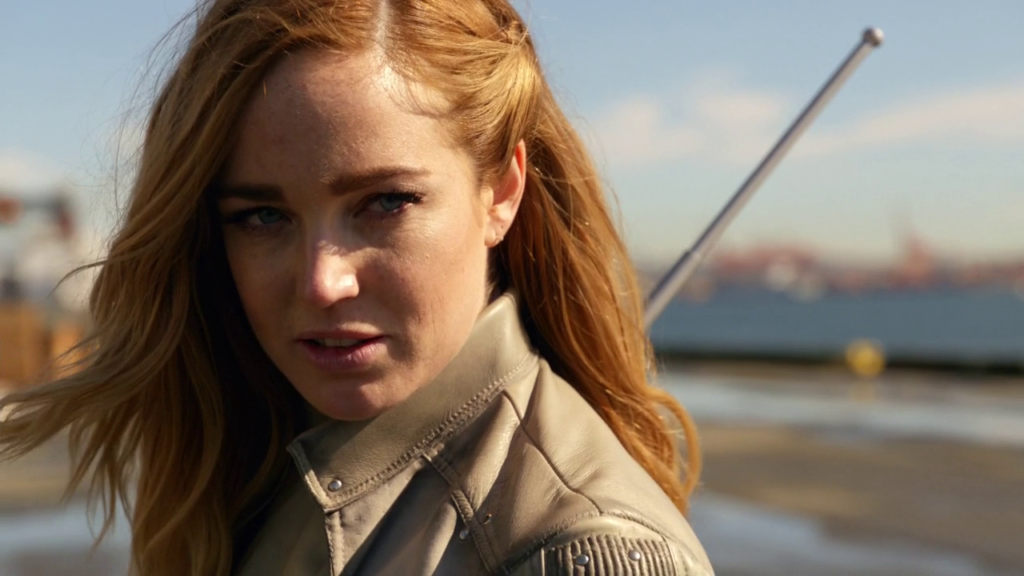Okay! Let’s get into the best superheroes, supervillains, and other comic-related characters of the season!
Honourable Mention: Real talk… few of these characters delighted me like the one character who defies every single category I have: Doom Patrol’s Danny the Street.
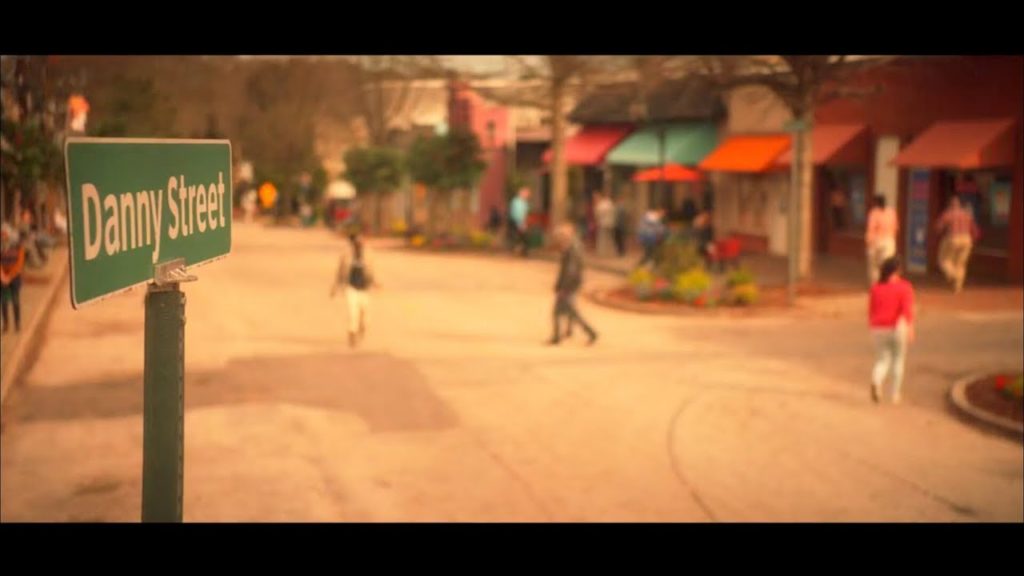
Image: DC Universe
Danny’s a sentient, teleporting, genderqueer street that houses a community of misfits and outcasts, and they’re delightful, and I was so happy the writers embraced the Grant Morrison weirdness of the Doom Patrol franchise enough to include Danny. Their debut episode, “Danny Patrol,” was a blast.
(I may eventually need more non-gendered categories, especially if one of these shows casts Liv Hewson or Asia Kate Dillon or another non-binary actor of their caliber… but not today.)
Anyway, on to characters a little easier to categorize. So easy they don’t even need introductory paragraphs to explain the categories.
Best Female Supporting Character!
Honourable mentions: Carrie-Anne Moss and Rachel Taylor had some good spirals into self-destruction on Jessica Jones; Yara Martinez remained fun as Miss Lint on The Tick; Julie Ann Emery had great edge as Featherstone on Preacher.
Bronze: Rachel Taylor as Trish Walker, Jessica Jones
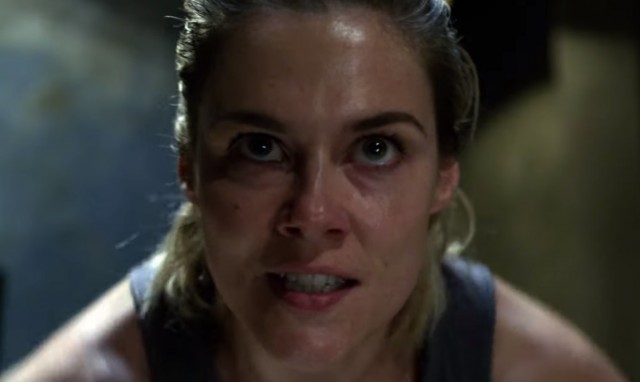
Image: Netflix
For the first two seasons of Jessica Jones, and a bit of The Defenders, Jessica’s best friend and adoptive sister Trish pushed Jessica to be a better hero, to use her gifts to help people and fight evil. But after the events of season two, Trish finally has powers of her own. She can finally be the hero she’s always wanted Jess to be. Sure the process that gave her powers has a slight history of also causing homicidal rage, and yes, her need to feel powerful caused all sorts of bad choices in season two, but this should be easy! Right?
Trish’s journey over season three is a rollercoaster, I tell you what, and Rachel Taylor came to play.
Silver: Tala Ashe as Zari Tomaz, Legends of Tomorrow
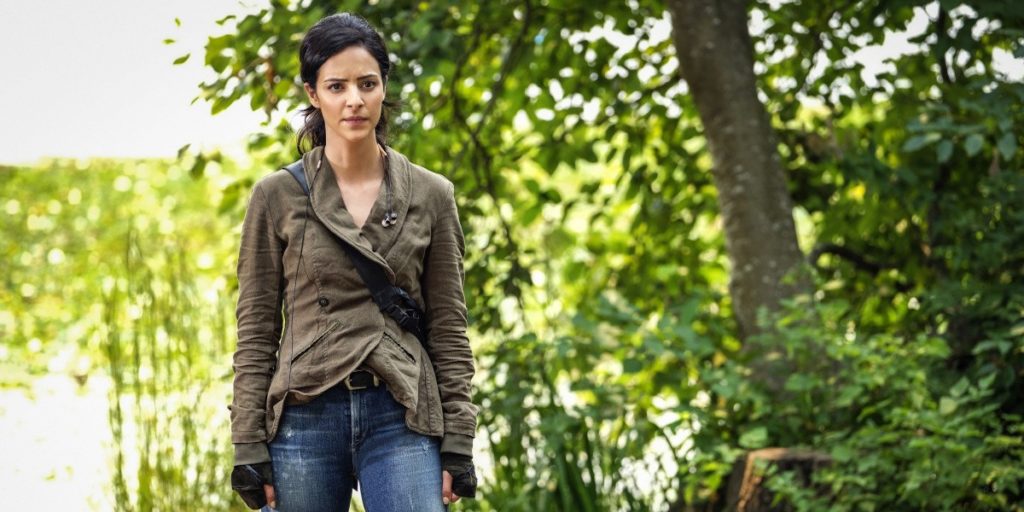
Image: CW
Playing a character whose classic hero name they can’t really use anymore, Tala Ashe’s dry wit was a welcome addition to Legends last season, and it remained so this year. But we also got to watch Zari’s tough shell begin to crack, as her survival instincts from the ARGUS police state future she came from began to relax. Her gradual, mutually awkward flirtation with fellow Legend Nate Heywood (spurred by something simple: pretending to be a couple for a heist and then thinking “Huh, we’re both hot, we could just do this”) was consistently adorable, and led to both one of the year’s best musical numbers (see last entry) and an emotional finale where she has to risk having her entire history rewritten to save Nate.
Plus she cut loose on some witch hunters (emotional), impersonated a 70s DJ (funny), and got turned into both a cat and a puppet (legendary). And if all of that weren’t enough, she opened the season with a powerful monologue on how fear took over her society, ending with one small but killer line. Lots of shows tackled fear and hate this season, but few managed as simple and powerful a moment as Zari watching her hijab-wearing mother smiling and laughing with young Zari in a playground, and asking “How could anyone be afraid of her?”
This season may have had slightly too little time for all of its character arcs, but Zari always shines.
Gold: Katie McGrath as Lena Luthor, Supergirl

Image: CW
There is a marvellous subtlety to Katie McGrath’s performance as Lena Luthor. She went through a lot of unpleasantness this season, loss and heartbreak and betrayal and more betrayal and a global hunt for her brother, and Katie McGrath managed to convey all the pain and sorrow Lena went through without dropping the cold, hard exterior she’s had to develop as both a successful businesswoman and a Luthor. Not the most open and loving family. Katie handled Lena’s bleak year with incredible nuance.
Katie is masterful at this role. Lena’s heading to a dark place, but I’m hoping she doesn’t go full-villain, because I don’t think I can bring myself to root against her.
Best Male Supporting Character!
Honourable mention: Jay Ali’s take as the tortured Agent Nadeem on Daredevil; most if not all of the male cast of The Umbrella Academy. Unless you consider all the Hargreeves kids to be leads, in which case just Hazel and Hargreeves Sr, I guess.
Bronze: Jesse Rath as Brainiac-5, Supergirl
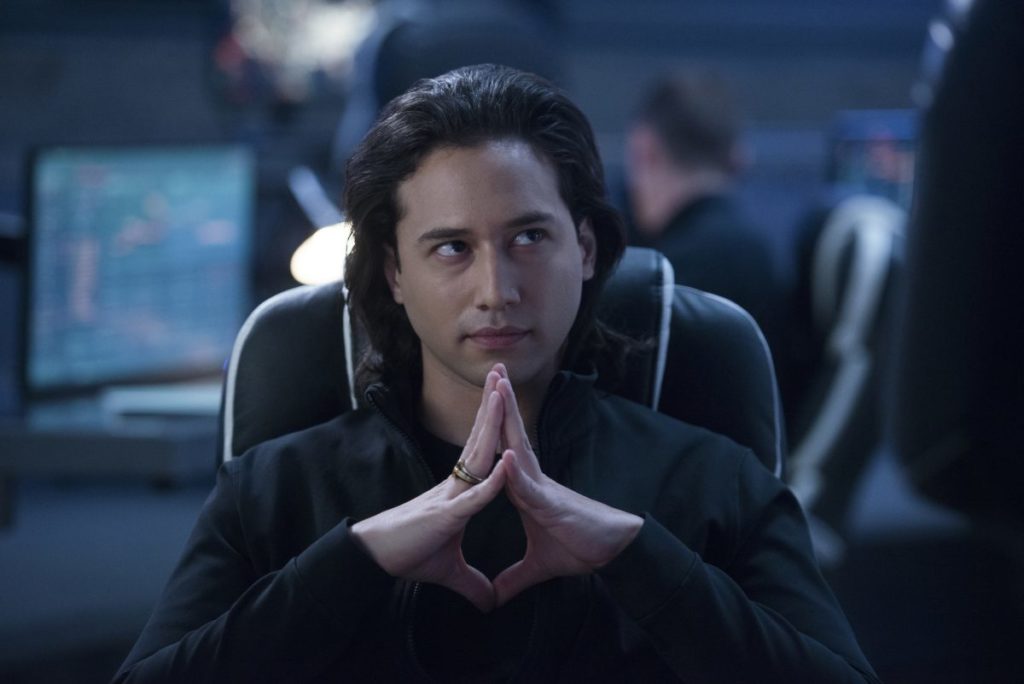
Image: CW
Last season, Jesse Rath swiftly won me and others over as Querl Dox, aka Brainiac-5, the Legion of Superheroes’ resident super genius. In season four, he takes the departed Winn Schott’s place at the DEO, working as both a DEO agent and secret superhero ally to Supergirl and her band of alien do-gooders when relations between the two groups deteriorate.
Rath’s always done a good and amusing job at portraying Brainy’s alien, calculating nature, existing somewhere between and to the left of Data and Spock, but as he began an awkward flirtation with Nia Nal, who he swiftly recognized as an ancestor of his old teammate Dream Girl, Brainy found new levels of cute.
But what really gets him on the podium came late in the season, as the alien-hating Children of Liberty accidentally unleashed Brainy’s dark side. As anyone familiar with Superman’s rogues gallery knows, the Brainiac line is not filled with pleasant people, and under torture, Brainy lost control of his ancestral memories. After an emotional moment, a darker, crueler Brainiac was unleashed, and Brainy went from cute to chilling.
I miss Winn sometimes, but damn Brainy’s fun to have around.
Silver: Robin Lord Taylor & Corey Michael Smith as Penguin & Riddler, Gotham

Image: Fox
There were definitely a few things Gotham did well, in the sea of things they did poorly. The art design, cinematography, at least half of their villain creations. But if I were to point to one thing that kept me going through all 100 episodes, one facet of the show that made coming back worthwhile through all the Mad Hatters and Jeromes and Jim Gordon never bringing backup, it was Robin Lord Taylor’s performance as Oswald Cobblepot. There is a time and place for restraint in acting, and Taylor understood that Gotham is not it, throwing every inch of himself into every scene he had. But he worked best when part of an unexpectedly great double-act.
Because when Penguin’s plots linked up with Ed Nygma’s? Magic. As begrudging allies, best of friends, or sworn enemies, their scenes together routinely popped. As we bid farewell to Gotham, it seemed fitting to give a final tip of the hat to their two best and most consistently entertaining villains.
Gold: Pip Torrens & Joseph Gilgun as Herr Starr & Cassidy, Preacher
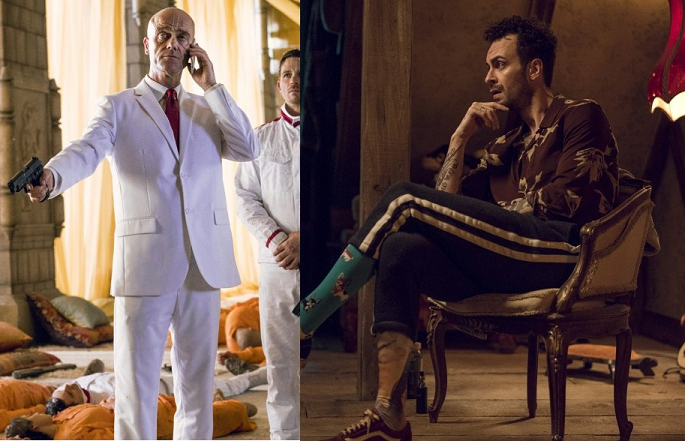
Images: AMC
Last year I talked about how perfectly Pip Torrens captures the cold, vicious, and utterly captivating Herr Starr, chief enforcer for the Grail, Earth’s secret rulers. Well, I’m not going to do that this year.
Because if anything he is surpassing his comics counterpart.
The chilling calmness with which Starr goes through his bloody business is always riveting to watch, and often hilarious. It’s at the point where I’ll be sad to see his joust with Jesse come to an end. And not just because I wasn’t ready for the show to be over after next season.
Meanwhile, Cassidy had some big moments this year, from fighting his best pal Jesse (a few times) over Tulip, even taping himself back together to go an extra round; to a quiet, sad, moment of choice where he realizes there are lines he can’t cross to keep Tulip; to his discovery of Les Enfants du Sang, a group of vampire wannabes led by the first fellow vampire Cassidy’s met in decades. Gilgun found new depths to Cassidy this season, and nailed them all. And he keeps the humour of the character, if his debate with the Enfants over how to kill a Grail infiltrator proves anything.

